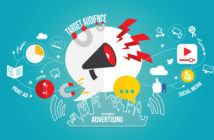In an economic landscape where every dollar counts, the call for cost-efficient marketing has never been louder. Marketers are expected to not only capture the imagination of a diverse audience but also to do so on budgets that are often less than extravagant. The challenge is clear: how to achieve more with less. This is not just about cutting costs—it’s about intelligent marketing that maximizes ROI without compromising on quality.
The Philosophy of Frugal Marketing: Doing More With Less
The frugal marketing philosophy isn’t about pinching pennies; it’s about strategic allocation and resourcefulness. It’s about harnessing creativity, leveraging data, and employing technologies that provide high return on investment. Below, we delve into some of the most effective strategies to improve marketing efforts in a cost-efficient manner.
1. Embrace the Data-Driven Approach
Data is the compass that guides modern marketing. By diving into analytics, marketers can identify which strategies yield the best results and double down on them. Conversion rate optimization (CRO) is a prime example of a data-driven strategy that focuses efforts on improving the performance of existing assets, thereby saving money that would otherwise be spent on acquiring new traffic.
2. The Power of Organic Reach
The allure of paid advertising is strong, but the potency of organic reach should never be underestimated. Content marketing, search engine optimization (SEO), and social media engagement can all drive traffic and conversions over time. Building a robust online presence organically requires an upfront investment in quality content creation, but it pays dividends in the long run with sustained traffic growth.
3. Smart Segmentation and Targeting
Broad, unfocused marketing is the antithesis of cost efficiency. Smart segmentation and precise targeting ensure that marketing messages reach the right people at the right time. By using segmentation, marketers can create highly relevant campaigns that resonate with specific audience subsets, leading to better conversion rates and lower acquisition costs.
4. Automation for Efficiency
Marketing automation tools are the unsung heroes of cost-efficient marketing. Automating repetitive tasks such as email campaigns, social media posting, and even certain aspects of customer service can significantly reduce man-hours and allow marketers to focus on strategic planning and creative tasks.
5. Leverage Customer Relationships
A loyal customer is not only a source of repeat business but can also be a vocal advocate for your brand. Referral programs, loyalty incentives, and community-building efforts can transform existing customers into brand ambassadors. Encouraging word-of-mouth marketing is often one of the most cost-effective strategies to boost sales and enhance brand reputation.
6. Agile Methodologies
Incorporating agile methodologies into marketing efforts allows for flexibility and responsiveness to market changes. By adopting a test-and-learn approach, marketers can rapidly iterate on campaigns, scaling what works and discarding what doesn’t. This iterative process helps avoid significant investments in untested strategies, saving money, and time.
Conclusion: The Art of Cost-Efficient Marketing
The path to cost-efficient marketing is not a straight line. It’s a winding road that requires constant learning, adapting, and innovating. It requires marketers to be more than just creatives or strategists; they must also be economists—always seeking to optimize the value of every dollar spent. By applying the principles outlined above, marketers can not only improve their marketing efforts but also ensure that every penny is working as hard as it can for the brand.




